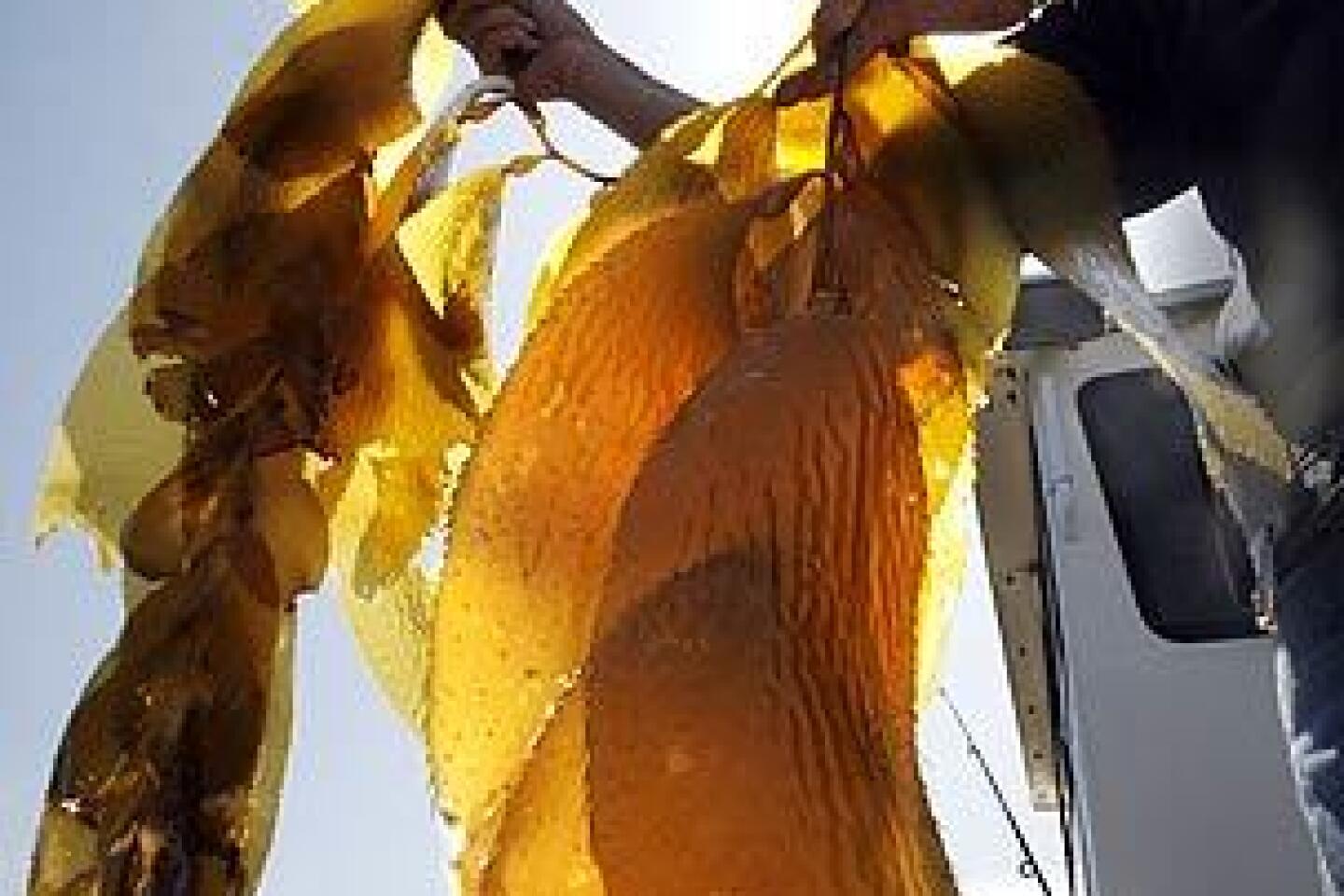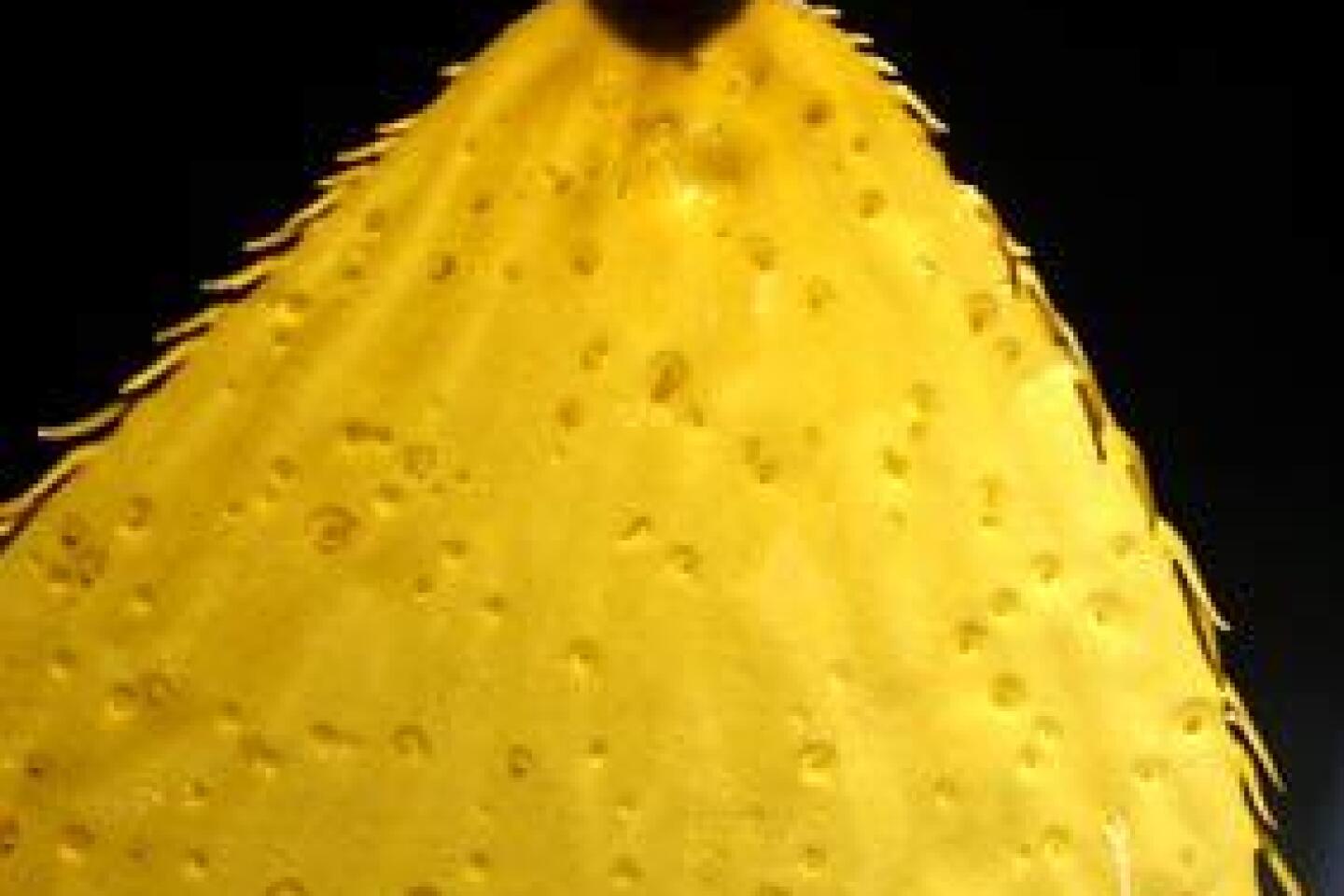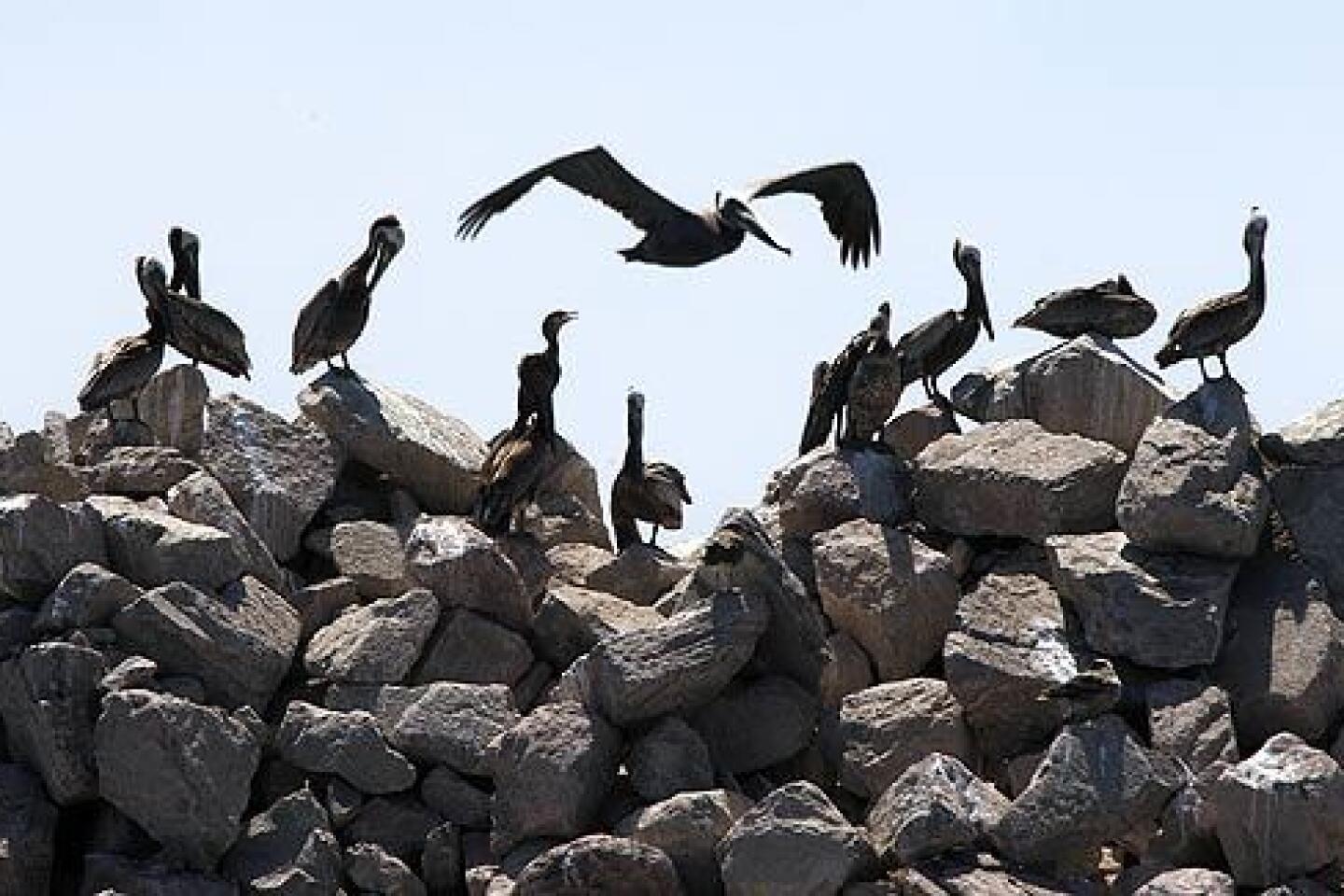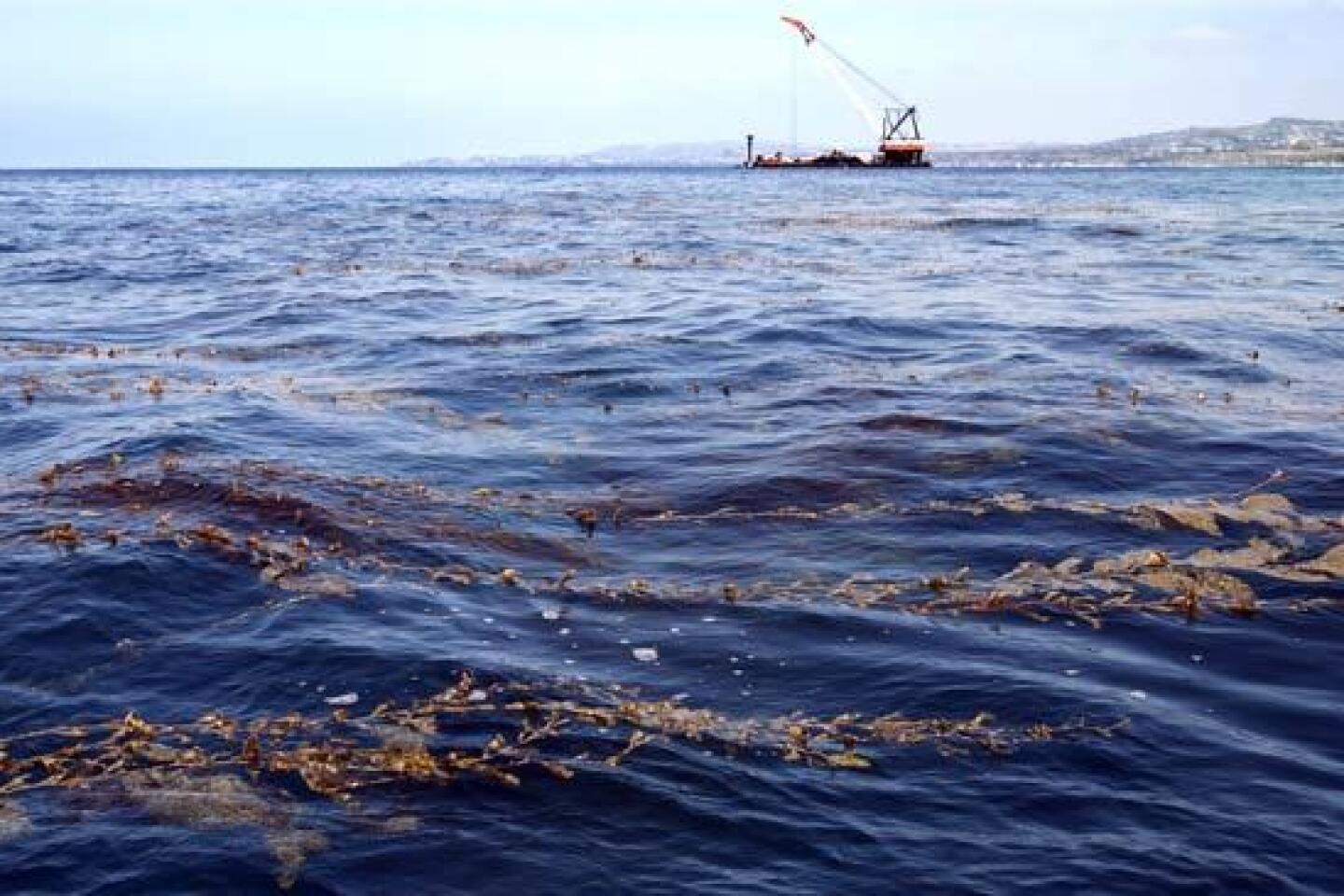Off San Clemente, an artificial reef is going up, er, down
- Share via
Rocks bigger than basketballs were pushed into the ocean off San Clemente this week to provide the foundation for a 150-acre reef for giant kelp -- a project scientists say is one of the largest and most advanced in the world.
The artificial reef, to be made from roughly 125,000 tons of volcanic rock, is designed to anchor a swaying kelp forest, attract an array of marine creatures and help counteract the environmental destruction wrought by a nearby nuclear power plant.
After years of bureaucratic debate and delay, Southern California Edison is bankrolling the $40-million undertaking as part of an agreement with the state Coastal Commission.
The effort stems from a 1989 scientific report that found that the cloudy water discharged by the San Onofre Nuclear Generating Station’s cooling system drifts south, blocking sunlight from a natural kelp bed and damaging about 180 acres of that habitat.
The reef will comprise puzzle-piece patches of rocks, their locations painstakingly planned through sonar measurements of water and sand depth; the rocks provide the hard surface kelp needs to flourish. Located more than half a mile offshore, the reef will stretch 2.5 miles roughly from San Clemente Pier to San Mateo Point, said Edison reef project manager Craig Eaker.
Key to the design is the loose arrangement of rocks in a single underwater layer, said Steve Schroeter, a research ecologist with the Marine Science Institute at UC Santa Barbara. This allows the rocks to jostle with the waves, flushing out competing species such as the pesky sea fan -- which takes longer to recover from swells -- and keeping space available for future generations of kelp. Other kelp reefs, built with stacked rocks, have failed, Schroeter said.
Fast-growing kelp can shoot past 100 feet upward, drawing sea stars and sea urchins plus striped sand bass, yellowtail and halibut -- and the anglers who chase them.
“You’re creating an . . . entire, complex marine ecosystem simply by laying down the foundation for the primary producers, the giant kelp,” said David Kay, Edison’s manager of environmental projects.
Aboard Edison’s 25-foot cuddy boat Wednesday, bobbing alongside reef construction barges, Kay pulled up a stalk of the slimy, ocher-colored kelp. The plant’s massive, bumpy leaves ruffled the water’s surface, evidence of the thriving 22.4-acre experimental reef built in 1999 for scientists to observe how kelp best survived. Divers attached laboratory-grown young kelp plants to the sea bottom; these plants were quickly overtaken by natural kelp growth. (Google satellite images of these kelp patches appear as glowing red squares.)
Scientists say the comprehensive five-year study -- the basis of the larger reef under construction -- was unique in its rigor.
“I would be surprised if there are many projects in the world that have been given as much thought and scrutiny as this reef,” said Dan Reed, a research biologist with the Marine Science Institute; Reed and Schroeter studied the first reef for the Coastal Commission. The new reef will fill in around the initial one.
Pelicans lounged Wednesday on a barge piled 20 feet high with gray gneiss rocks quarried from Santa Catalina Island. A bulldozer plunks the rocks into 50-foot-deep water, landing them within a foot or two of their target, said Hany Elwany, an oceanographer and coastal engineer with Coastal Environments, a La Jolla company working on the reef. Construction is scheduled to finish by October.
Planners are watching for oceanographic changes such as El Niño, which raises water temperature and kills kelp, and multiplying sea fans crowding out the giant plants -- which could force divers to remove the sea fans. Kay hopes to see a canopy of kelp atop the water next summer.
Scientists will monitor the kelp plants’ growth for several years, Kay said. Observers will compare the sea life on the man-made reef with that of two natural reefs, and look for at least four adult plants per 100 square meters of reef.
In San Diego County, Edison is also creating a $90-million, 150-acre wetland in Del Mar as part of its environmental mitigation, and has built a white sea bass hatchery in Carlsbad. In spite of a complex elevator system to help fish sucked into the plant’s cooling system return to the ocean, the power plant kills an average of 600 tons of fish each year, Kay said.
Environmental advocates applaud the reef project, but some question whether it goes far enough.
The San Onofre nuclear plant is “the most destructive marine industrial facility ever built,” said Mark Massara, statewide director of the Sierra Club’s coastal programs. The 2,200-megawatt plant is the region’s largest power source, serving as many as 1.5 million households at any time.
“This reef is really just the tip of the iceberg in terms of trying to restore the marine resources that this plant had destroyed,” Massara said. “My only regret is that they’re not doing a lot more.”
susannah.rosenblatt@
latimes.com
More to Read
Sign up for Essential California
The most important California stories and recommendations in your inbox every morning.
You may occasionally receive promotional content from the Los Angeles Times.



















